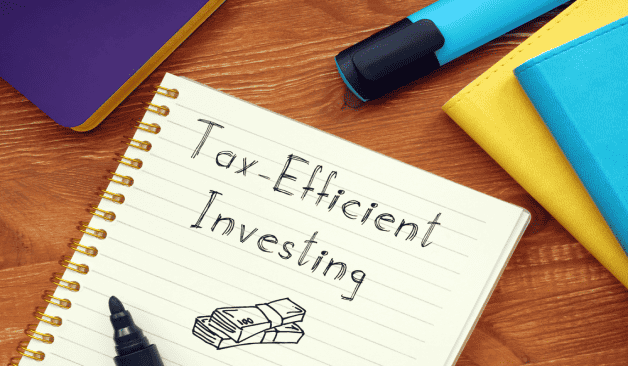
Tax-Efficient Investing: Maximizing returns and minimizing taxes
You must know that if you make 50% returns on your investments, you don't get to keep all of it most of the time. You need to pay taxes on your gains, and no matter how much money you have or gains you make, seeing your money getting deducted in taxes is not a happy feeling. Focusing only on increasing profits may not be the best thing to do.
You need to have an active tax-management strategy to ensure your returns are maximized, and taxes are minimized. In today's article, we will learn about the same.
Understanding Tax Implication
The first thing to understand is the tax implication of any asset you plan to invest in. In equity investments, your gains are taxed depending on your holding period. If the holding period is less than a year, your gains are labeled as Short Term Capital Gains and taxed at 15%. If your holding period is more than a year, your gains are taxed under Long Term Capital Gains (LTCG) and at 10%.
However, you get an exemption up to Rs 1 lakh, which means if your total LTCG is less than Rs 1 lakh in a financial year, you don't need to pay any taxes. Whether you plan to invest in equity or bonds, it is essential to have a clear understanding of the tax implications associated with different investments.
Ways to maximize returns and minimize taxes
Below are a few things you can do to maximize returns and minimize taxes:
Invest in tax-exempt assets: If your risk profile allows, you can invest money in tax-saving options with the potential of higher returns. For example - instead of investing in tax-saving fixed deposits, you can invest in ELSS mutual funds. If you don't want to take a higher risk, you may consider Public Provident Fund (PPF) and Employees' Provident Fund (EPF) - both provide exemptions under Section 80C. Also, you may invest in National Pension System, which offers tax benefits under Section 80CCD.
You not only have to invest in instruments that help you save tax upfront. Additionally, look at assets in which gains are tax exempted. Your profits in PPF and EPF are exempted from tax. It makes them better than other options where one needs to pay taxes on capital gains.
Avoid Frequent Churning: Another way to maximize gains by reducing tax is avoiding frequent churning. For example, if you frequently buy and sell stocks within a short time frame, your gains (if any) from these transactions could be subject to higher short-term capital gains tax rates as discussed earlier. However, if you adopt a long-term approach and hold onto your stocks for more than one year, you can benefit from the lower long-term capital gains tax rates, potentially maximizing after-tax returns. By reducing the frequency of transactions, you minimize tax liability and allow your investments to compound over time, resulting in a more tax-efficient and financially rewarding strategy in the investment landscape.
Tax Harvesting: Another way is making use of tax loss harvesting. It is a strategy used to reduce taxes by offsetting capital gains with capital losses. The strategy involves selling investments that have declined in value to offset the gains from other investments, thus lowering your overall taxable income. For instance, assume you hold only two stocks in your portfolio: A and B.
Stock A has gained significantly in value, and Stock B has experienced a loss. Instead of selling both stocks at the same time, the investor could sell Stock B to realize the loss. The loss can then be used to offset the gains from selling Stock A. The net capital gains would be reduced, resulting in a lower tax liability. However, there are certain rules and limitations to be aware of when implementing tax loss harvesting. Capital losses can only be set off against capital gains within the same financial year. Any unutilized losses can be carried forward for up to eight years to offset future capital gains.
Balanced Portfolio: You need to follow the basics whether you want to save tax or increase gains - have a balanced portfolio. A balanced portfolio can help you reduce taxes and increase gains by strategically allocating your investments across different asset classes. By diversifying your holdings into a mix of equities, bonds, and other instruments, you can potentially take advantage of varying tax treatments for different types of income. For instance, dividends from equities might be tax-free, while interest income from bonds could be taxed at a different rate. Additionally, a balanced portfolio can help you manage risk, potentially minimizing the need for frequent trading and reducing capital gains taxes. Moreover, rebalancing the portfolio periodically can help you lock in gains from high-performing assets and potentially offset losses in others, contributing to a more tax-efficient strategy.
Consult a Tax Advisor: If you think everything we have discussed above is too much to do, the best option is to consult a tax advisor and seek help. Not understanding and making mistakes will cost you more than the consulting fees. Also, tax laws and regulations can change, and their impact on your investments can be complex. It's advisable to consult a tax advisor to tailor your investment strategy to your specific financial situation and goals.
Conclusion
Tax-efficient investing involves a combination of strategic asset allocation, thoughtful investment choices, and staying updated on tax laws. By implementing the above strategies, you can potentially enhance your returns and minimize your tax burden, ultimately paving the way for long-term financial success.










